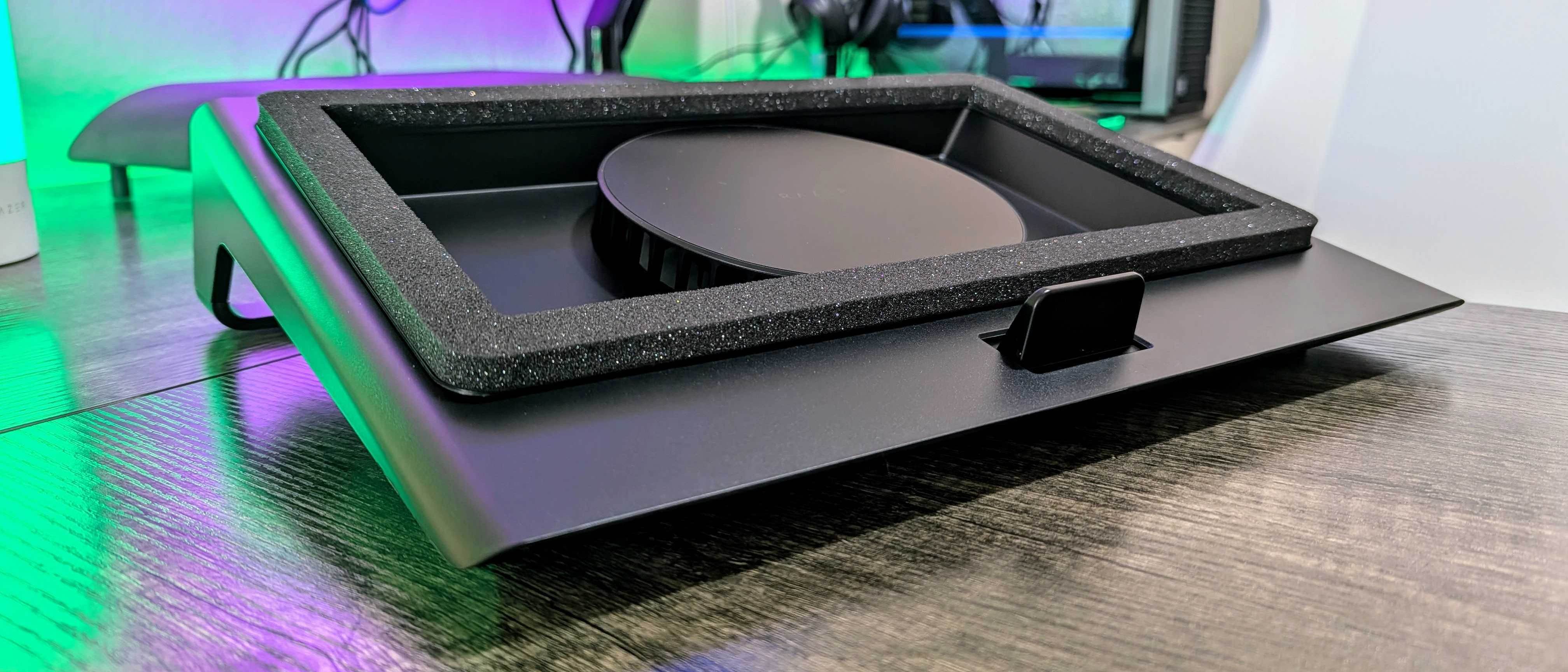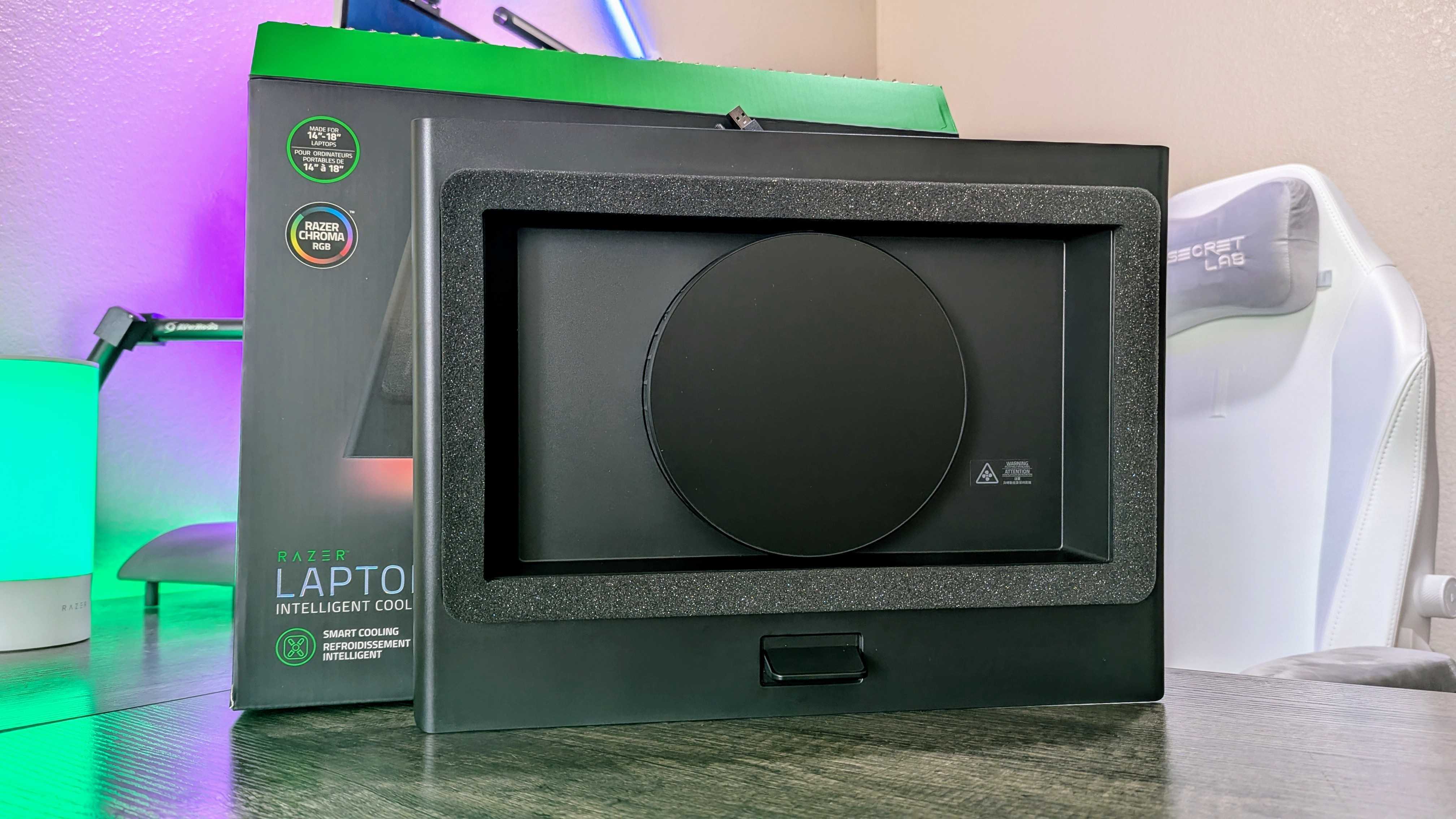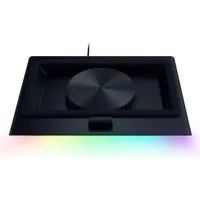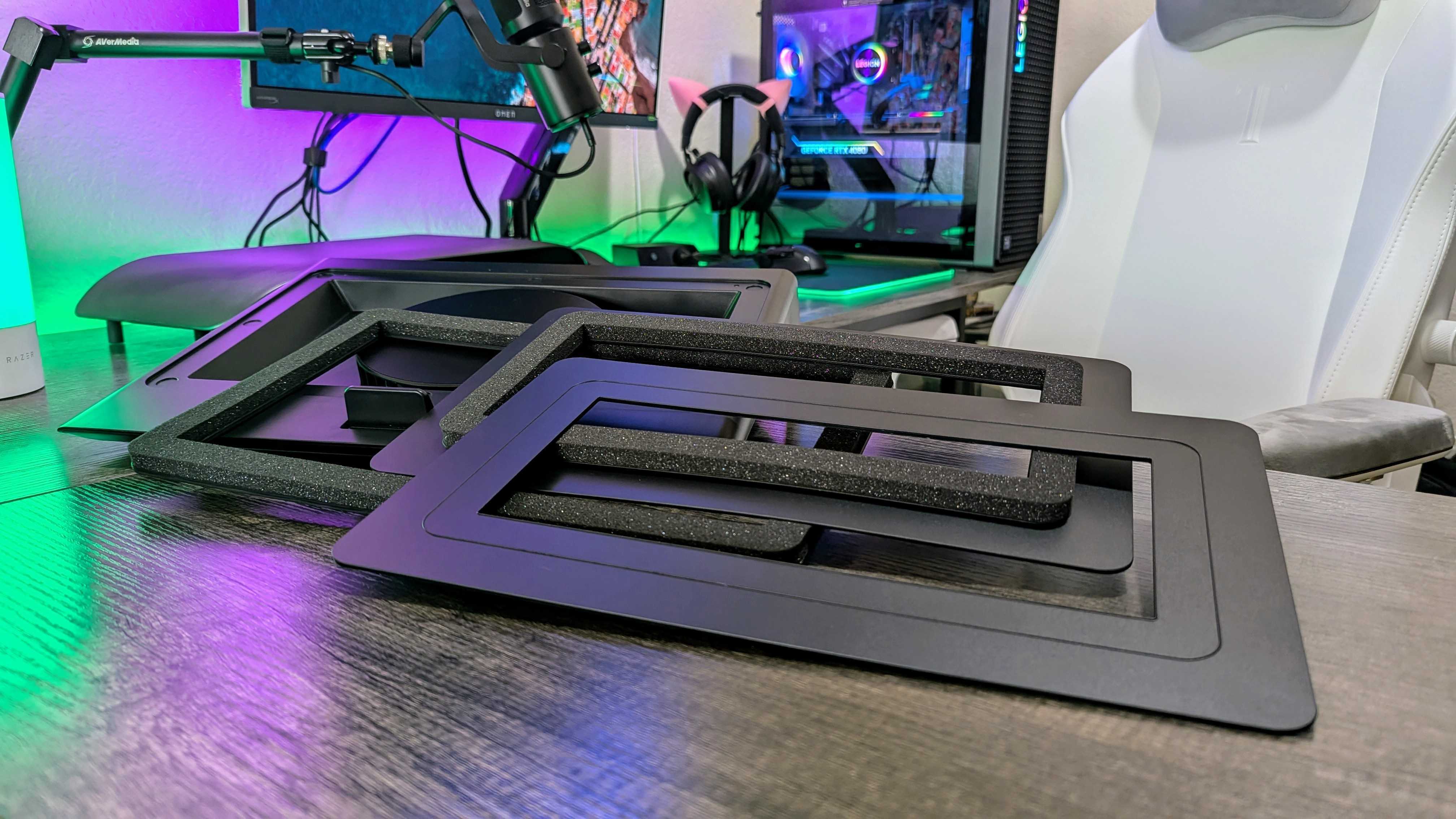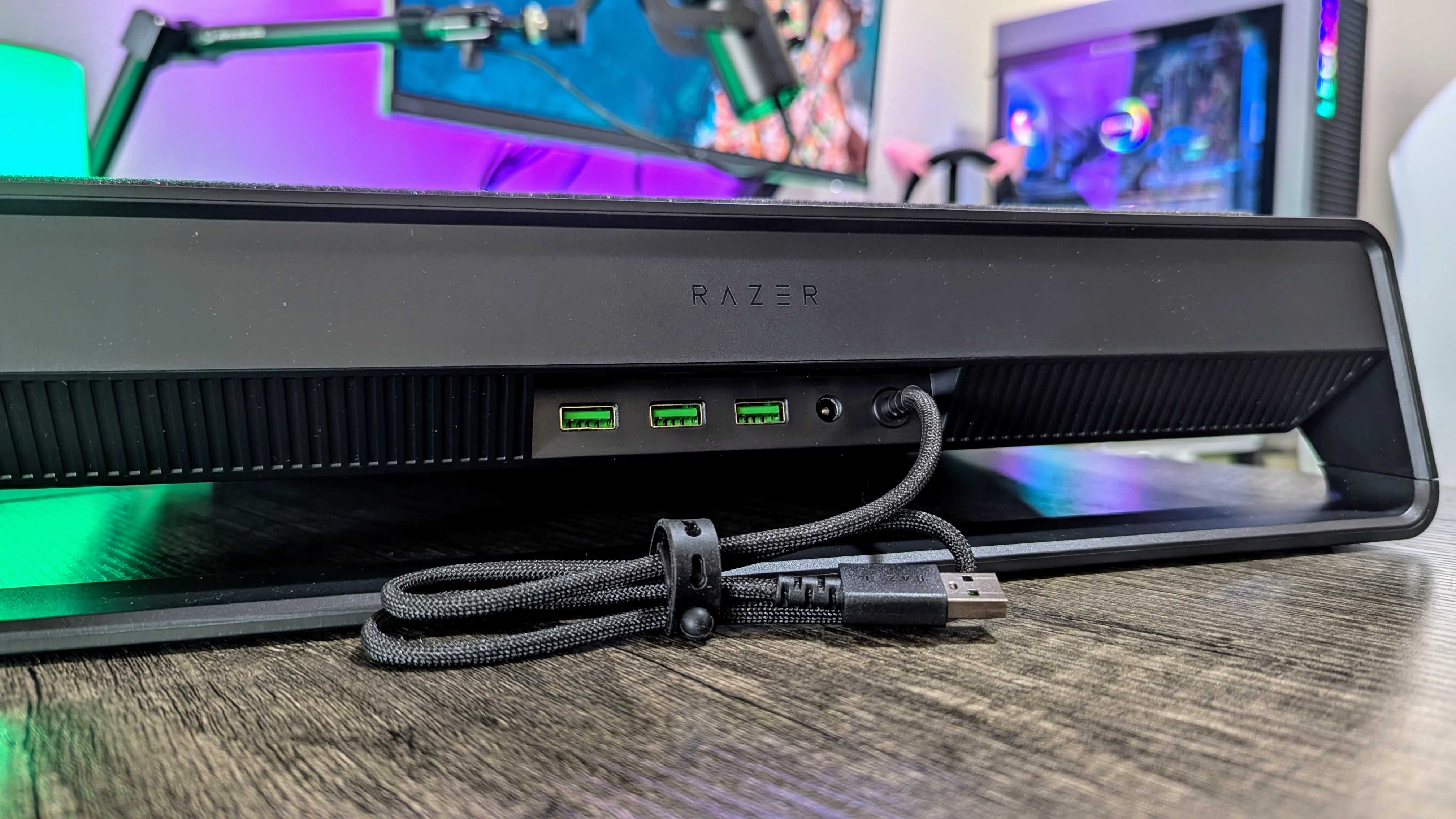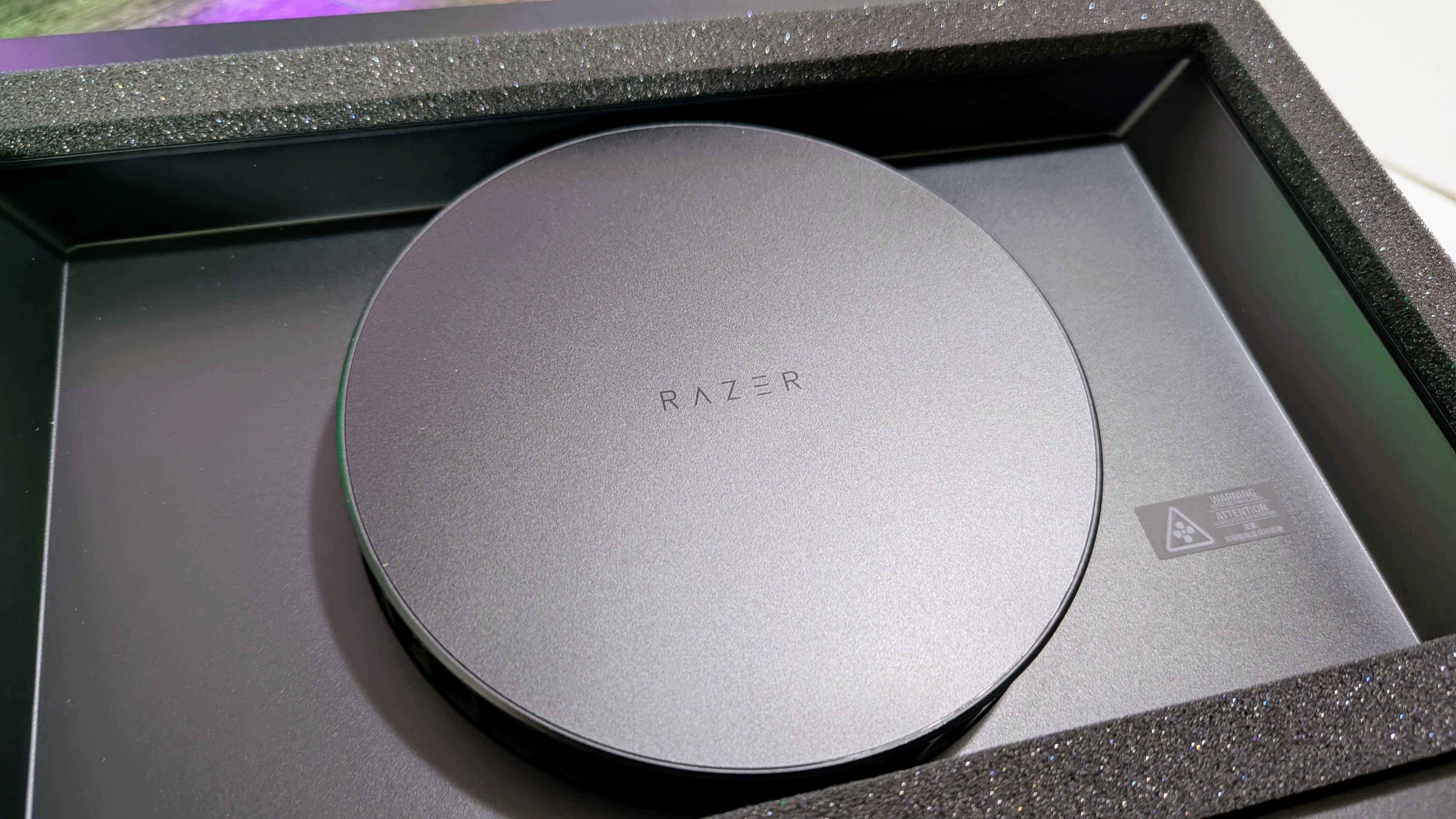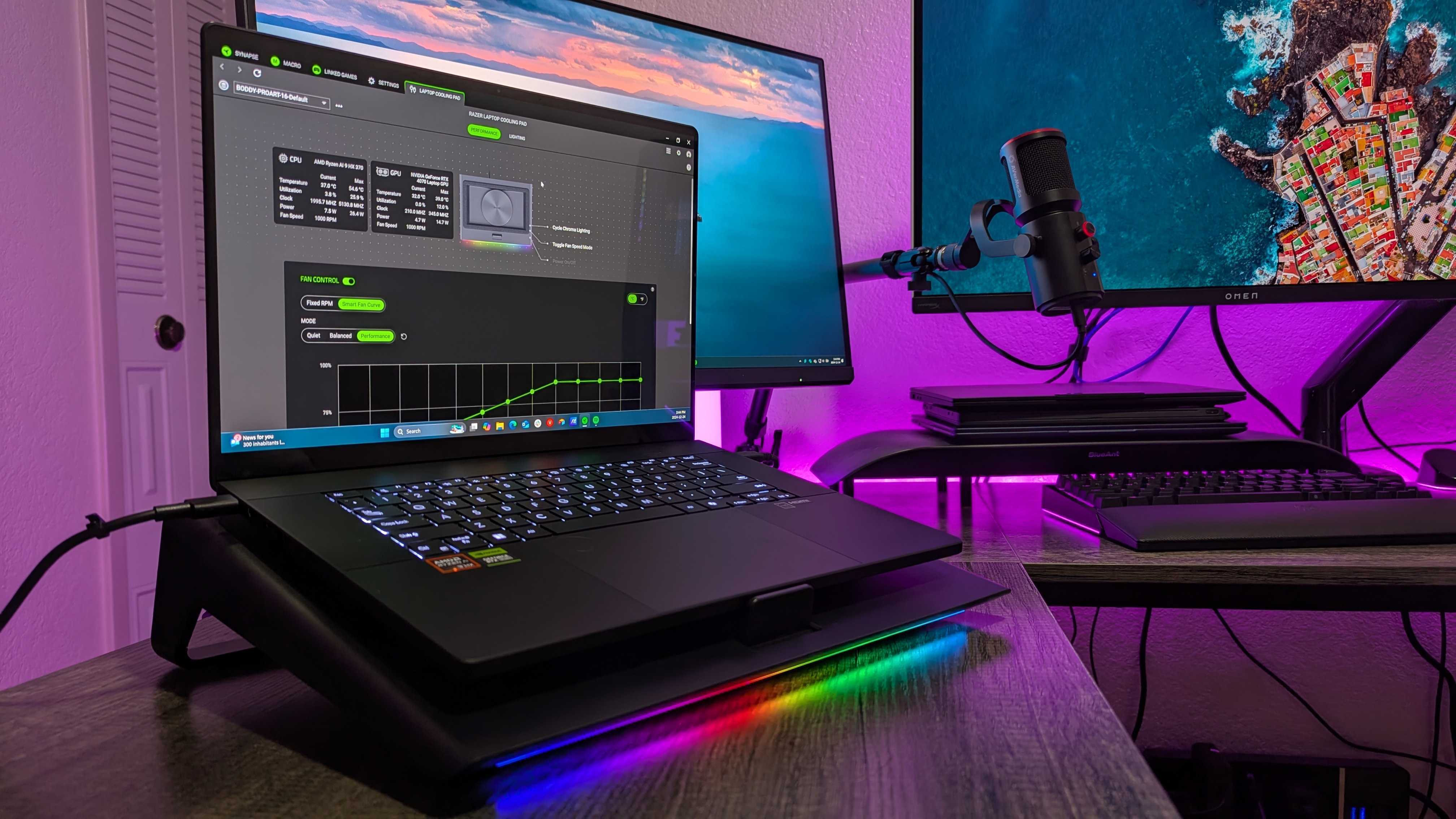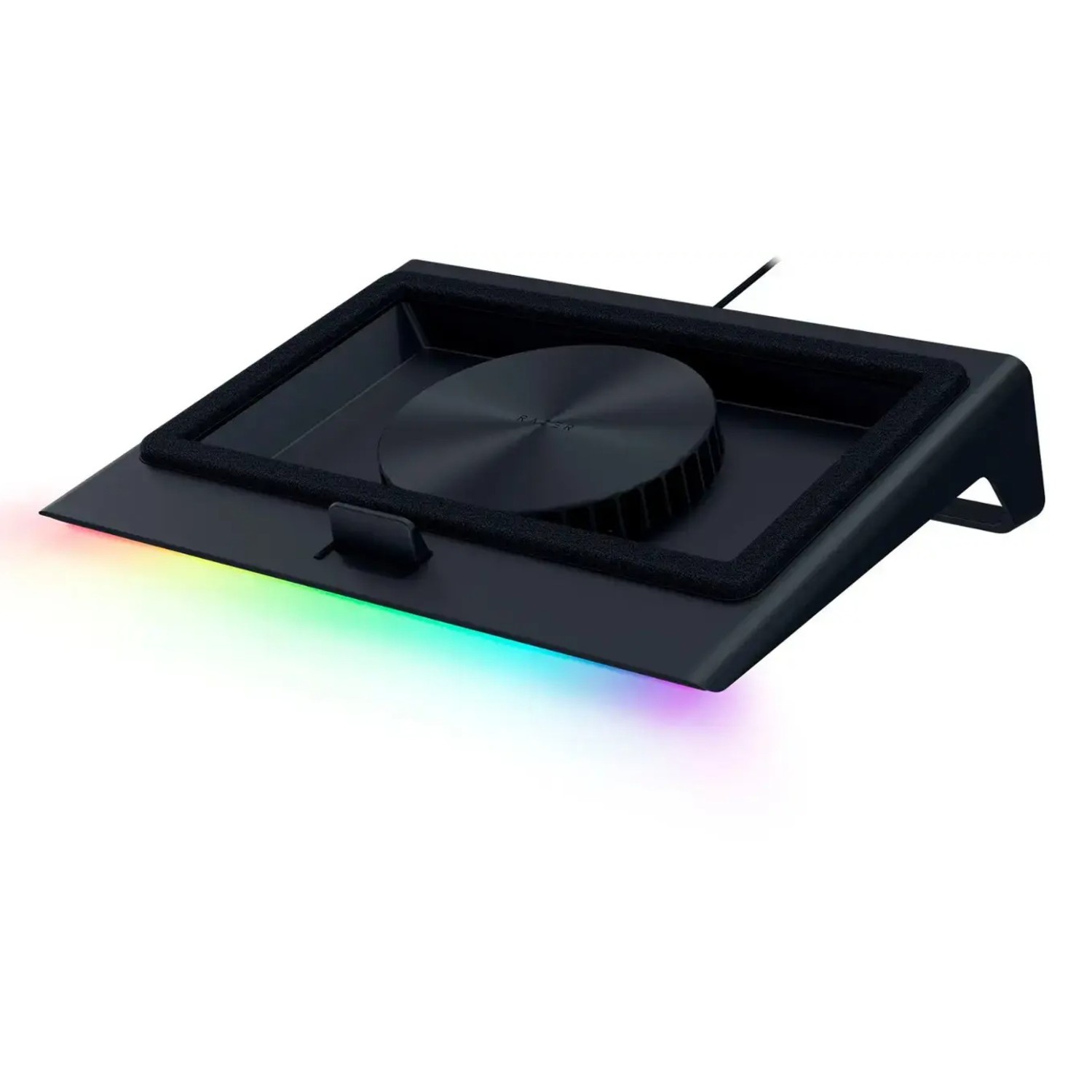Windows Central Verdict
The Razer Laptop Cooling Pad is a premium solution for managing your laptop's thermals, and it's surprisingly effective at keeping temperatures down over long, intensive workloads. That 140mm fan is incredibly loud, though, and unless you're constantly pushing your laptop's hardware, the investment may not be worth it.
Pros
- +
Attractive design with wide laptop compatibility
- +
Actually makes a difference in keeping your laptop cool
- +
Includes three additional USB Type-A ports
Cons
- -
That fan can get very loud
- -
You really need to be constantly pushing your laptop to its limits to justify it
Why you can trust Windows Central
Your laptop is likely one of the most important tools in your arsenal, and if you're a gamer, creator, engineer, or any other occupation that demands flawless performance, you probably push that laptop to its limits.
There are plenty of cooling pads and other solutions that claim to improve laptop performance by reducing heat produced under load, but these products achieve their goals with mixed results. Now, one of the largest names in PC gaming has joined the fray, with Razer releasing the Laptop Cooling Pad. This cooling pad isn't exclusive to Razer laptops, either, with Razer's modular frame system adapting to almost any 14-to-18-inch laptop.
I've been using the Razer Laptop Cooling Pad with the ASUS ProArt P16 (2024) I reviewed (a close equivalent to the Razer Blade 16) to gauge if this cooling pad really does make a difference. The answer? Yes, you can achieve lower temperatures and even improved performance with the Razer Laptop Cooling Pad whirring under your laptop, but the improvements aren't always obvious, despite how much noise this cooling pad can produce.
Jan. 13, 2025 @ 1:15 p.m. ET — Jumped in to quickly update this review with information on the new Razer HyperBoost feature after its announcement at CES 2025.

I haven't just reviewed dozens of tech and gaming products (including laptops, monitors, and accessories), I've also spent many thousands of hours gaming across Windows PC and Xbox. I have the tools and expertise necessary to properly evaluate how this cooling pad may improve your laptop's performance.
This review was made possible thanks to a review sample provided by Razer. Razer had no input nor saw the contents of this review prior to publication.
Laptop Cooling Pad: Pricing and specifications
- The Razer Laptop Cooling Pad retails for $149.99.
- It should support most laptops, and doubles as a USB hub.
• Price: $149.99 at Best Buy
• Compatibility: 14-inch to 18-inch laptops, including those with passive cooling or no bottom ventilation
• Features: Single 140mm fan (up to 3,000 RPM), replaceable intake mesh air filter, smart cooling mode, Razer Chroma RGB lighting, 3x USB Type-A ports, onboard controls, Razer Synapse 4 support
• Dimensions: 39.6 x 29.2 x 11.4cm (15.6 x 11.5 x 4.5in)
• Weight: 1.6kg (3.52lbs)
The Razer Laptop Cooling Pad approaches this product category with a familiar intent from Razer — to break into a new space with a premium, design-forward product. Most laptop cooling pads firmly rest in impulse buy territory, with miniscule prices fueled by awkward or low-quality designs. The Razer Laptop Cooling Pad, on the other hand, is sleek and confident, and packed with features... leading to its abnormally high price tag for the category.
If you want to bolster your setup with a massive fan, the Razer Laptop Cooling Pad retails for $149.99 at Best Buy. That's a steep price, for sure, but I'll go ahead and spoil the review a little and let you know that this cooling pad does work, and that price could be worth it if you constantly find yourself inadvertently stress-testing your poor laptop.
In the box, you'll find the Razer Laptop Cooling Pad, three magnetically attached frames to adapt to different laptop sizes and designs, and a 36W DC charger. This product is covered by Razer's standard 2-year warranty.
Razer Laptop Cooling Pad
Buy now: $149.99 at Best Buy
The Razer Laptop Cooling Pad aims to keep your laptop from throttling when pushed to its limits, but it also doubles as a premium laptop stand and basic USB hub. It's loud and expensive, but some will find it worth the cost.
👉See at: BestBuy.com or Amazon.com or Razer.com
Laptop Cooling Pad: The good
- This cooling pad is smartly designed and is easy to use.
- It also succeeds in keeping your laptop cool, especially over time.
The Razer Laptop Cooling Pad is on the larger side for a cooling pad, but it bears that weight with finesse. Predominantly constructed of matte black plastic, this cooling pad is sleek and subtle in all the ways Razer is known for. Of course, it also boasts RGB lighting, but it's more modest than Razer's usual aggressive approach, being limited to a single strip along the front.
All the latest news, reviews, and guides for Windows and Xbox diehards.
It's a smart design, too. The 36W DC charger plugs into the back, the non-detachable USB Type-A data cable plugs into your laptop, and you get an additional three USB Type-A 2.0 ports to make up for the one you lost. On the right side, you'll find a power button, a button to cycle through the RGB lighting modes, and a button to cycle through the fan performance modes.
The Laptop Cooling Pad spins up quickly and is easy to customize through Razer Synapse 4, although your options are understandably limited to the fan mode (you can set a flat RPM, use the smart cooling mode, and switch between two performance profiles) and the lighting.
What's most important is how it performs, though, and the Laptop Cooling Pad does do its job, with some caveats. I ran the ProArt P16, a slim and compact premium laptop with an NVIDIA GeForce RTX 4070 GPU under the hood, through various gaming benchmarks, including Forza Horizon 5, Gears 5, and Cyberpunk 2077.
I kept settings identical and ran each benchmark with and without the laptop cooling pad enabled, and only one game actually saw a framerate improvement. Gears 5 gained a measly 2 frames-per-second (up from 82 FPS), while FH5 and CP2077 remained static. However, that's not really why you'd want this cooling pad. I can tell you that average GPU temperatures were lower during those benchmarks, even if performance didn't noticeably improve, and the positive impact of the Razer Laptop Cooling Pad becomes more pronounced over longer sessions.
I stress-tested the ASUS ProArt P16 with 3DMark's intensive Time Spy benchmark, looping it 50 times consecutively to gauge sustained performance and thermal management. Without the Razer Laptop Cooling Pad, the ProArt P16 managed a framerate stability of 98.8% (that's the difference between the best and worst performing loops). The GPU never received more than 104W of power, and its temperature went as high as 78 degrees Celsius. CPU utilization spiked to a max of 53% utilization.
With the Laptop Cooling Pad running on its smart cooling mode and repeating the exact same stress test, the ProArt P16 achieved a 99.3% framerate stability with better overall performance. The GPU received more juice (up to 107W), stayed noticeably cooler (with a max of 70 degrees Celsius), and kept more weight off the CPU (which never went above 44% utilization). Without the cooling pad, the ProArt P16 became too hot to comfortably touch above the keyboard; there was no such issue with the cooling pad enabled.
Razer HyperBoost
At CES 2025, Razer announced an assortment of new products and concepts, including the all-new, redesigned Razer Blade 16 (2025). Buried in these announcements was a brand-new feature for the Razer Laptop Cooling Pad, dubbed Razer HyperBoost.
Razer HyperBoost comes to all Laptop Cooling Pad owners as a completely free update, and its utility is straightforward. All you have to do is download a custom (free) firmware for your supported Razer Blade 16 (which includes 2023, 2024, and upcoming 2025 models), and you'll be able to push your hardware even further.
Razer HyperBoost allows your Blade 16 to break its hardware limits and improve performance in games and other intensive tasks by carefully marrying the Laptop Cooling Pad's intelligent fan to its internals. I've seen it in action and it does make a difference, although I don't have a Razer Blade 16 to do my own personal tests. you can read more about Razer HyperBoost at Razer.com.
Laptop Cooling Pad: The bad
- The fan can be incredibly loud, to the point of drowning out speakers.
- You also have to pay a hefty sum for what may seem like small gains.
This thing is loud. It may utilize foam to "vacuum seal" to the bottom of your laptop, and there may be three magnetic frames to adapt to laptops of all types and sizes, but you'll still hear that prominent whirring each time the fan ramps up. It's certainly a lot louder than the built-in fans in the ASUS ProArt P16, which makes sense given its sizeable 140mm diameter.
If you use a pair of headphones or a headset with your laptop, it likely won't make much of a difference, but the amount of air the Razer Laptop Cooling Pad is pushing through its fan chamber and into your laptop is enough to overwhelm most laptop speakers.
Ultimately, you're also paying $150, whereas other popular laptop cooling pads are $70 or less. Sure, Razer's offering is more premium, more intelligent, and more feature-packed, but that's a decent chunk of change for slightly improved performance and lower temperatures. The fact that the Razer Laptop Cooling Pad's singular fan is enough to overpower the noise of multiple other fans is just the compromise-flavored cherry on the cake.
Laptop Cooling Pad: Final thoughts
You should buy this if ...
✅You want to protect the long-term health of your laptop
One of the top killers for any device is heat damage accumulated over time, as intensive workloads can wear out components and thermal management systems faster. If you want to protect the long-term health of your laptop, the Razer Laptop Cooling Pad could be perfect.
✅You're constantly pushing your laptop to its limits
Whether you're a gamer, a content creator, or something else, the Laptop Cooling Pad can help your laptop run longer and smoother while pushing its hardware to the max. Better thermals can translate to better performance, and that's especially true over long, intensive sessions.
You should not buy this if ...
❌You're usually on the go or use your laptop for more casual work
If you're not regularly using your laptop docked at a desk or you rarely use your laptop for intensive tasks like gaming or video editing, then the Laptop Cooling Pad likely isn't worth the investment.
The Razer Laptop Cooling Pad is not a hack for obtaining monumentally better performance, and you won't see massive framerate gains in your favorite games. No, the Laptop Cooling Pad is designed to dial the heat down and let your laptop stretch further and for longer. With it, your laptop may be able to stay at its peak without worrying about throttling under pressure.
It's the perfect accessory for those who are constantly testing how much their laptop can do or regularly work at a desk with their laptop plugged in. It's a basic USB hub, a premium laptop stand, and a comprehensive health plan for your laptop all in one. The Razer Laptop Cooling Pad is loud to an almost ridiculous degree, though, and it costs more than most cooling pads you'll find on the market (even if it is better, that price tag will still make a lot of people hesitate).
If you fit the bill and the Razer Laptop Cooling Pad fits your bill, then you can buy it now for $149.99 at Best Buy. It may be designed with Razer Blades in mind, but it worked fantastically with the ASUS ProArt P16 and should adapt just as well to almost any laptop.

Zachary Boddy (They / Them) is a Staff Writer for Windows Central, primarily focused on covering the latest news in tech and gaming, the best Xbox and PC games, and the most interesting Windows and Xbox hardware. They have been gaming and writing for most of their life starting with the original Xbox, and started out as a freelancer for Windows Central and its sister sites in 2019. Now a full-fledged Staff Writer, Zachary has expanded from only writing about all things Minecraft to covering practically everything on which Windows Central is an expert, especially when it comes to Microsoft.
